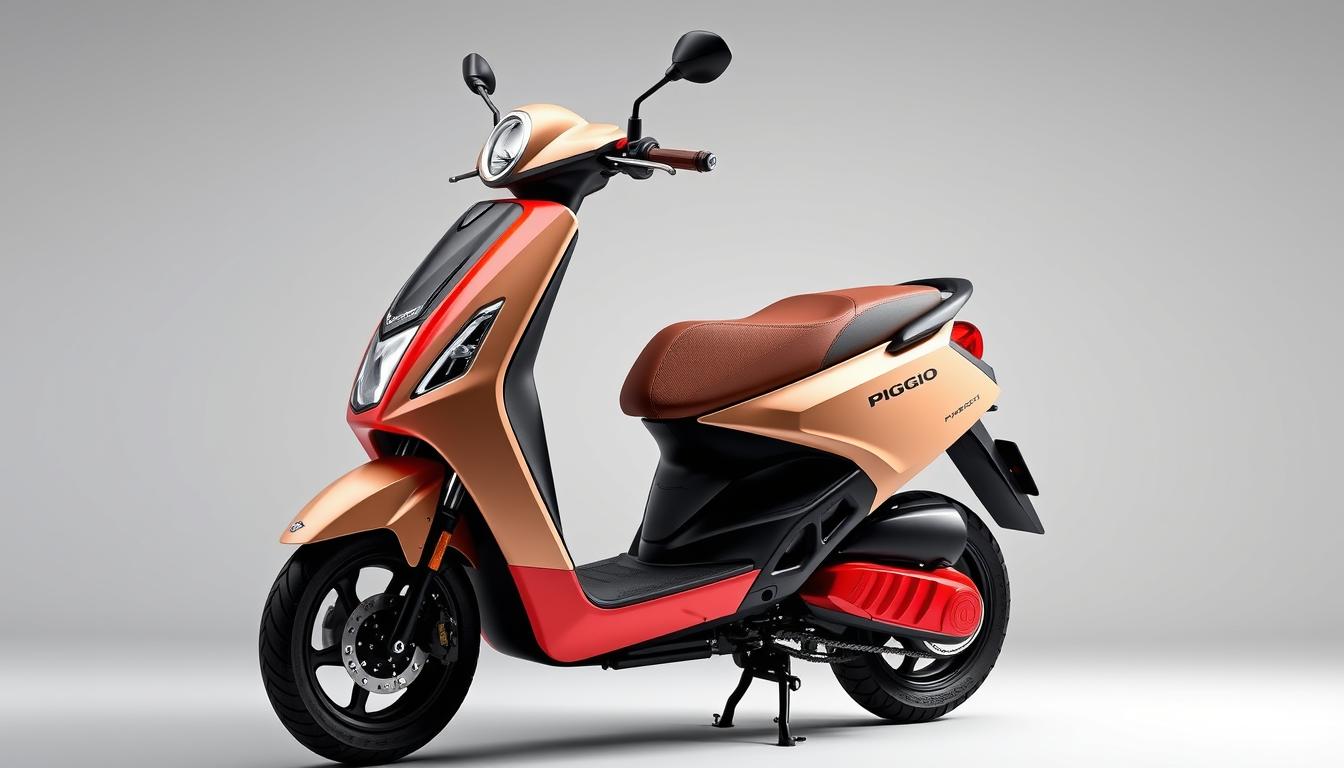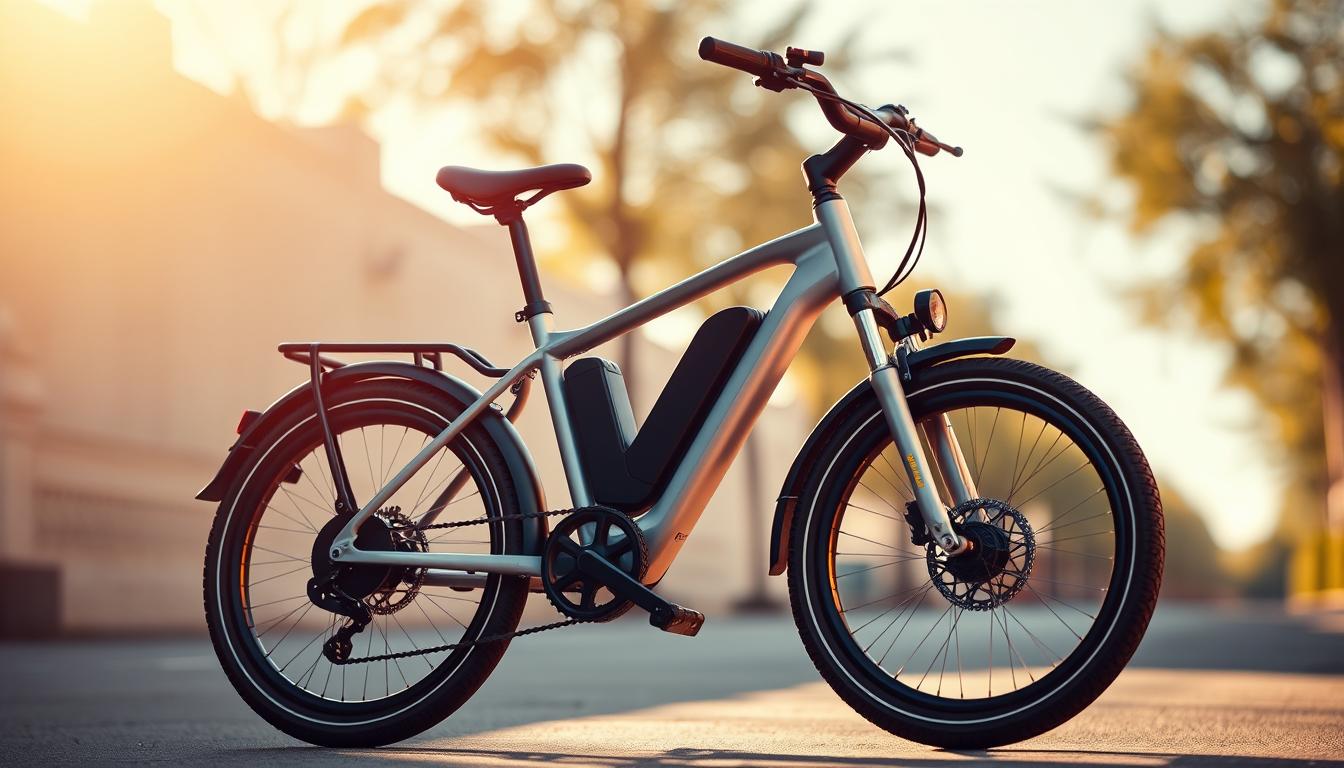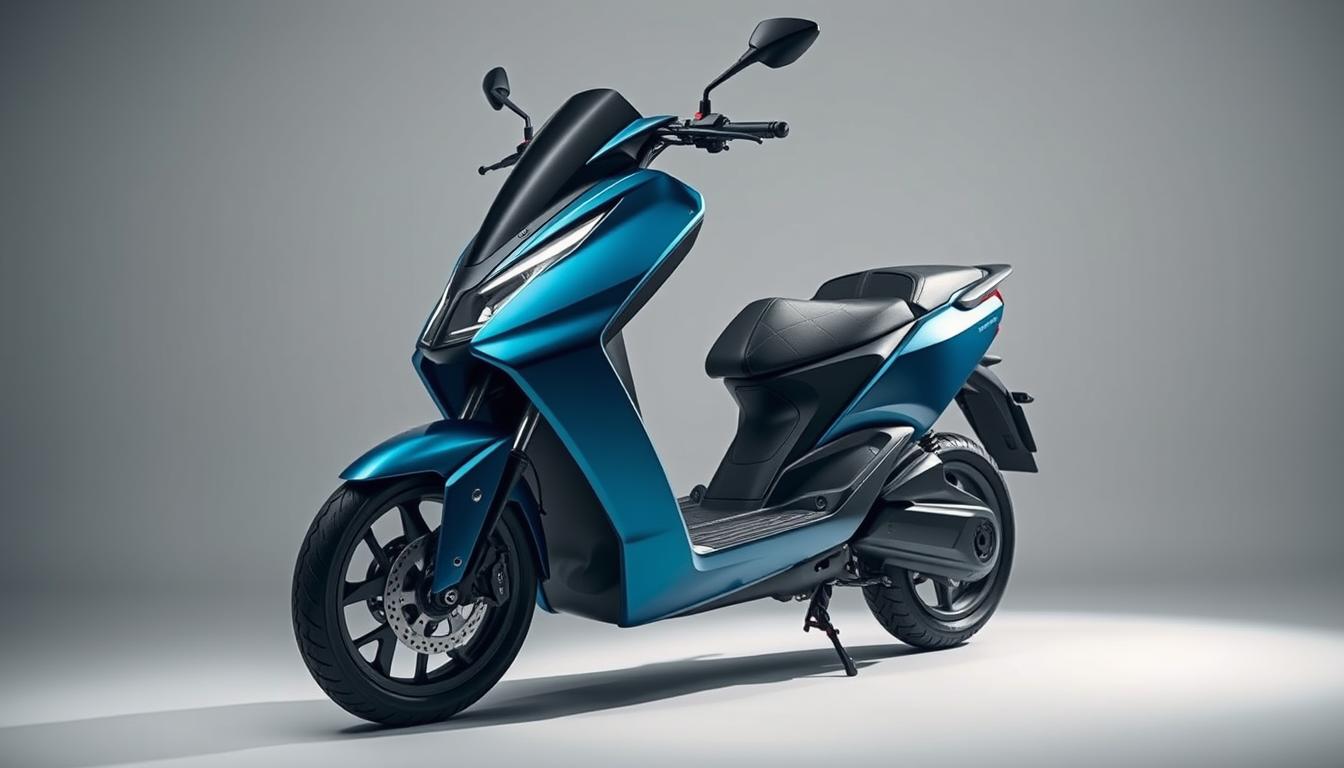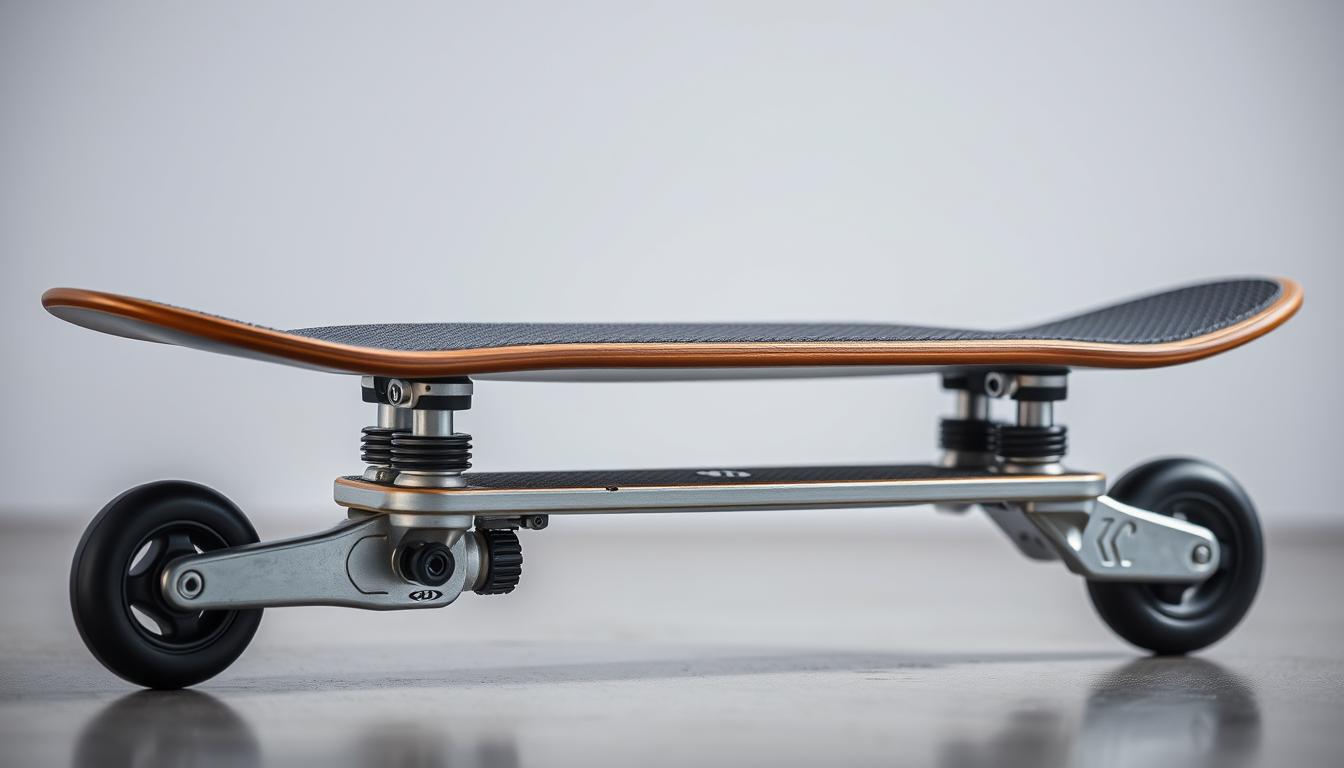
Fiido Q1S Electric Bike Review: Features and Performance

Did you know over 34.2 million Americans could switch to electric bikes by 2025? This surge reflects a growing demand for eco-friendly, efficient transportation. At the heart of this trend lies the Fiido Q1S—a foldable hybrid that blurs the line between compact bicycles and seated scooters.
Designed for urban commuters, this model packs a 36V 10.4AH battery and a 250W motor. It delivers a zippy 12.4 MPH top speed while covering up to 34.2 miles per charge. The lightweight frame folds easily, making it ideal for cramped apartments or mixed-mode travel.
What sets it apart? Unlike bulkier e-bikes, the Q1S combines scooter-like agility with bicycle stability. Riders get responsive handling for crowded streets and enough power for moderate hills. The battery’s safety features add peace of mind for daily use.
This review dives into its design quirks, real-world range tests, and value compared to traditional bicycles. Whether you’re dodging traffic or storing it under a desk, the Fiido model offers a clever solution for sustainable commuting.
Design and Build Quality
Urban riders need gear that’s tough enough for daily use but light enough to carry upstairs. The aluminum alloy frame delivers both, offering rust resistance and a sturdy base for city adventures. Five color choices—Black, Red, White, Green, and Grey—let commuters match their ride to their style without sacrificing durability.
Frame Material and Color Options
This bike’s material isn’t just about looks. Aluminum keeps the weight under 40 lbs, making it easier to lift onto trains or into trunks. The smooth welds and rounded edges show attention to detail, ensuring no snags on bags or clothing during rushed mornings.
Compact, Lightweight, and Foldable Design
When folded, the size shrinks to 45 inches long and 12.4 inches wide—smaller than most suitcases. This streamlined shape fits in tight spaces like studio apartments or office corners. A padded carrying bag (sold separately) turns the folded bike into a wheeled package, perfect for mixed commutes involving buses or stairs.
Performance and Speed Capabilities
Urban commuters demand quick acceleration and reliable power for stop-and-go traffic. The 250W motor delivers exactly that, combining brisk takeoffs with steady climbs. Riders feel an immediate push when starting from red lights, thanks to optimized torque output that prevents jerky movements.

Motor Power and Torque Insights
With 250 watts of continuous power, this motor handles steep inclines without overheating. The secret lies in its torque curve—designed to provide maximum push at low speeds. This means smooth starts even when carrying bags or climbing curbs.
Riders appreciate how the system balances raw power with control. You won’t get wheel spin on wet pavement, just predictable acceleration that matches your pedal input.
Maximum Speed and Acceleration
Top speed caps at 12.4 MPH, striking a balance between safety and efficiency. While not built for racing, this max velocity lets you keep pace with city traffic effortlessly. The bike reaches its limit quickly—just 4.5 seconds from standstill to full throttle.
Lower wattage motors often struggle on hills, but the 250W unit maintains momentum. It’s perfect for weaving through gridlocked streets where rapid speed changes matter more than outright velocity.
Battery Capacity, Range, and Charging
Powering through city streets requires more than just a strong motor—it demands a reliable energy source. The heart of this electric ride beats with a 36V 10.4AH battery, engineered for urban commuters who value consistency. Voltage and amp-hour ratings work together like a well-choreographed dance, delivering steady power without sudden drops.

Battery Specifications and Safe Charging
This power pack shines with its temperature-resistant design, operating smoothly between 14°F and 122°F. A full charge takes six hours—ideal for overnight topping up. Smart charging habits matter: unplug once full to preserve cell health and avoid leaving it in direct sunlight.
Why stick with one battery when some riders carry extras? While dual batteries extend range, this single unit’s capacity handles most daily needs. Its built-in safeguards prevent overheating, making it safer than many third-party alternatives.
Real-World Range and Autonomy
Manufacturers claim 34.2 miles per charge, but real-world results depend on terrain and riding style. Stop-and-go traffic might trim that number, while steady cruising maximizes efficiency. Cold weather slightly reduces performance, but the battery bounces back once temperatures rise.
Forget range anxiety—this setup balances capacity with practicality. Regular commuters appreciate how the charger fits in backpacks, enabling top-ups at coffee shops or offices. It’s the silent partner that keeps wheels turning mile after mile.
Unique fiido q1s Features
Redefining urban mobility starts with smart design choices. This model skips the standard scooter formula by merging a full-sized seat directly into its frame. Riders get bicycle-like comfort without sacrificing the compact footprint of a foldable ride.
Integrated Seating and Innovative Design Elements
The adjustable seat isn’t an afterthought—it’s central to the bike’s identity. Unlike bolt-on options that wobble or limit legroom, this design positions riders for optimal control. The cushioning strikes a balance between firm support and long-term comfort, even on bumpy streets.
Traditional scooters force users to stand, but the Fiido Q1S lets you sit upright like a bicycle. This one-of-a-kind approach reduces fatigue during 30-minute commutes. The seat height adjusts in seconds, accommodating riders from 5’1″ to 6’2″.
Hidden details make it shine. A built-in latch locks the seat when folded, preventing accidental openings. The frame’s curved geometry directs rainwater away from the cushion, keeping it dry between uses. These touches show how thoughtful engineering elevates everyday rides.
Component Details: Tires, Brakes, and Rear Motor
Ever wonder what keeps an electric ride stable during sharp turns or sudden stops? The answer lies in three critical components working in harmony. Let’s explore how tire design, braking systems, and motor placement create a balanced urban riding experience.

Tire Size and Durability Considerations
The 12*2.125-inch tires strike a perfect balance between agility and grip. Wider than standard scooter wheels, they absorb bumps while maintaining nimble handling. Each tire features a puncture-resistant layer, reducing flats from glass shards or potholes.
Proper tire pressure (marked on the sidewall) ensures optimal performance. Overinflation reduces comfort, while underinflation strains the motor. For those exploring tire upgrades, the 2.125-inch width allows compatibility with multiple tread patterns—ideal for rainy days or gravel paths.
Brake Performance and Rear Motor Functionality
Dual disc brakes deliver consistent stopping power, even on wet roads. The rear-mounted system works with the motor’s regenerative braking to slow the bike smoothly. Riders feel immediate response when squeezing the levers—no lag or squeaking common in cheaper models.
Positioning the motor near the rear wheel improves traction during acceleration. This setup also distributes weight evenly, preventing front-wheel skids. Combined with the tires’ wide contact patch, it creates a confidence-inspiring ride whether navigating tight corners or busy intersections.
User Experience and Ride Comfort
Ever notice how some rides leave you refreshed while others drain your energy? This model’s ergonomic design solves that puzzle through thoughtful engineering. Every detail—from grip angles to weight distribution—works together to reduce fatigue during daily commutes.

Ergonomics and Handlebar Controls
The handlebars curve inward slightly, letting wrists rest naturally during long rides. Rubberized grips absorb vibrations from rough pavement, while thumb-operated buttons sit within easy reach. Riders adjust speed modes without glancing down—a crucial feature for busy streets.
Weight distribution plays a key role in comfort. The reinforced tube structure balances the load between front and rear wheels. This prevents the front end from feeling too heavy when braking or climbing curbs. Evenly spaced frame welds eliminate pressure points where legs contact the bike.
Enhanced Safety Features and Ride Logging
Built-in sensors track speed, distance, and battery levels in real time. A tiny display below the handlebars shows trip time—helpful for estimating arrival or planning charge stops. Data syncs to a companion app, creating a safety log that highlights rough road sections or frequent braking zones.
Smart tech extends to theft prevention too. The system detects unauthorized movement and sends alerts through the app. Combined with the balanced tube design, these features create a ride that’s as secure as it is comfortable.
Tech Upgrades and Custom Modifications
Customizing electric rides unlocks hidden potential beyond factory specs. Enthusiasts transform standard models into personalized commuters through smart tweaks and component swaps. These changes boost both performance and practicality for urban explorers.

VESC Controller and Wiring Enhancements
Swapping stock controllers for VESC units revolutionizes power management. These programmable systems fine-tune acceleration curves and prevent motor overheating. Upgraded wiring harnesses with copper-nickel alloys improve current flow, letting riders push their bikes harder without voltage drops.
Tech-savvy users often pair these changes with replacement battery tubes. This allows fitting higher-capacity cells while maintaining the frame’s sleek profile. Threads on forums like custom VESC controllers show how precise calibrations can squeeze 15% more torque from existing motors.
Accessory Integration: Lights, Horn, and Sensors
Modern commuters demand more than raw power—they want smart features. Waterproof LED light strips mounted on the frame’s main tube enhance nighttime visibility. Integrated horns with adjustable volume settings cut through city noise without bulky add-ons.
Upgrade kits often include motion sensors that trigger anti-theft alarms. These mods require careful routing through the bike’s hollow tubes to maintain weather resistance. A upgraded charger port simplifies juicing up accessories while the main battery charges—no more juggling multiple power cords.
Pricing, Value, and Eco-Friendly Commuting Benefits
Today’s savvy buyers seek value that stretches beyond price tags to environmental impact. This foldable e-bike delivers both, blending competitive costs with planet-friendly perks. Let’s break down how it stacks up against traditional transport options.
Smart Spending Meets Sustainable Choices
Priced under $1,000, this model costs 42% less than many mid-tier e-bikes with similar specs. Compared to gas-powered scooters, riders save $300+ annually on fuel. Current promotions sweeten the deal—a limited-time $25 coupon slashes the price further when bundled with accessories.
Three key factors make it a budget-friendly pick:
- Low energy consumption (1.5¢ per mile vs. cars’ 15¢)
- Durable components needing fewer replacements
- Tax credits available in 18 states for eco-conscious purchases
Recent news highlights its inclusion in New York City’s “Green Commute Rewards” program. Participants earn points toward future upgrades by tracking emissions saved. For urbanites weighing cost and conscience, this choice cuts expenses while shrinking carbon footprints—a true win-win.
Closing Thoughts on the Fiido Q1S Electric Bike
Finding the perfect balance between power and portability isn’t easy—but this e-bike nails it. Its 250W motor delivers smooth acceleration and reliable torque, while the 36V 10.4AH battery provides up to 34.2 miles per charge. Lightweight aluminum construction keeps the frame sturdy yet manageable, and the foldable design fits effortlessly into tight spaces.
Priced competitively under $1,000, it outperforms many scooters and traditional bikes in value. Current promotions sweeten the deal with coupons and potential tax rewards. Safety features like temperature-resistant batteries and regenerative braking add confidence for daily rides.
From ergonomic seating to intuitive handlebar controls, every detail prioritizes rider comfort. Tech upgrades like motion sensors and app connectivity enhance security without complicating the experience.
For eco-conscious commuters seeking a reliable, efficient ride, this model stands out as a smart choice. It’s proof that innovative design can transform how we navigate cities—one mile at a time.
FAQ
What materials are used in the frame, and is it foldable?
The frame combines lightweight aluminum alloy with reinforced steel joints, ensuring durability without excess weight. Its foldable design allows easy storage in tight spaces like car trunks or closets.
How does the motor perform on steep inclines?
The 250W rear hub motor delivers reliable torque for moderate hills, though riders may need to pedal-assist on steeper gradients. Acceleration remains smooth, reaching up to 15.5 mph on flat terrain.
What’s the real-world range on a single charge?
Depending on rider weight, terrain, and assist level, the 36V 7.8Ah battery provides 25–35 miles. Eco mode extends autonomy, while higher speeds drain energy faster.
Are the tires puncture-resistant, and what size are they?
The 14-inch tires feature reinforced treads and anti-puncture layers, balancing agility and durability. Regular pressure checks are recommended for optimal performance.
Can accessories like lights or sensors be added easily?
Yes! The bike supports aftermarket upgrades, including LED lights, torque sensors, and horns. Wiring modifications via a VESC controller enhance customization without compromising safety.
How long does the battery take to charge fully?
Using the included charger, a full charge takes 4–5 hours. Avoid leaving it plugged in overnight to prolong battery lifespan and prevent overheating.
Does it include built-in safety features?
Front and rear disc brakes ensure quick stops, while ergonomic handlebars improve control. Some riders add reflectors or Bluetooth-enabled ride loggers for extra security.
Is the seat adjustable for different heights?
The integrated seat post allows limited height adjustments. Taller riders might prefer an aftermarket seat or suspension post for added comfort.
Are coupon discounts or seasonal deals available?
Retailers occasionally offer coupons or bundle deals, especially during holidays. Subscribing to newsletters or checking affiliate sites can unlock savings.
How eco-friendly is it compared to traditional bikes?
With zero emissions and energy-efficient power use, it reduces carbon footprints significantly. Its compact size also eases urban congestion, promoting cleaner commuting.





